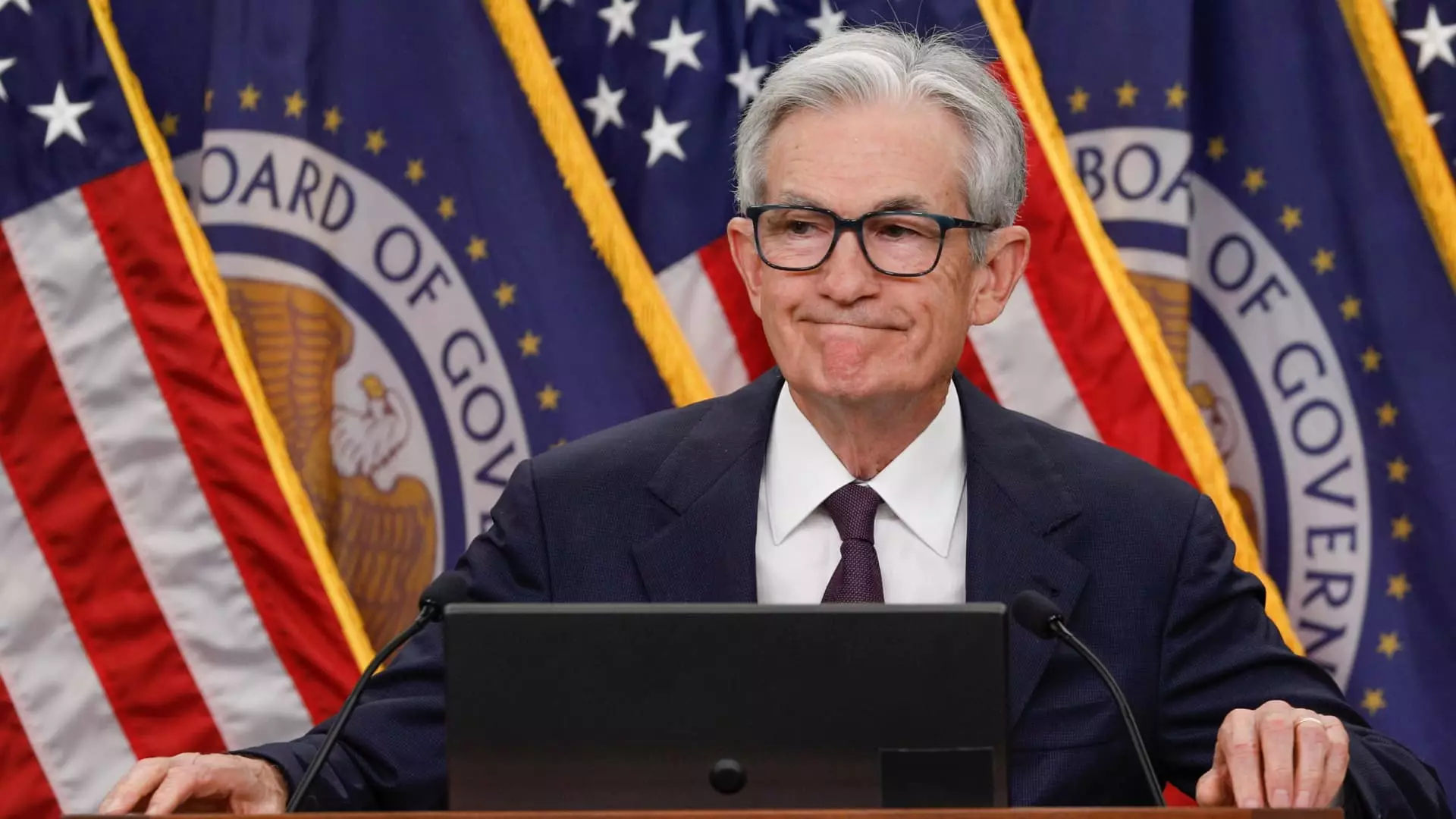As Federal Reserve Chair Jerome Powell prepares to address Congress this week, the stakes could not be higher. His semiannual testimony, set to unfold across two days, presents a crucial opportunity for Powell to articulate the Fed’s strategy on interest rates amidst mounting pressures from various stakeholders. With critical voices from the White House and the financial sector urging him to adopt a more accommodative monetary policy, Powell finds himself navigating uncertain terrain. This situation highlights not only the challenges faced by the Fed but also emphasizes the intricate dance between politics and economics in today’s financial landscape.
Increased Political Pressure and the Fed’s Independence
The current environment surrounding Powell’s testimony reflects a significant shift. Long historically viewed as a bastion of independence, the Federal Reserve is feeling the heat from President Donald Trump and several White House aides advocating for rate cuts. Such interventions are particularly concerning as they introduce a layer of political influence that could potentially undermine the credibility of the Fed. Mohamed El-Erian, chief economic adviser at Allianz, has pointed out that with two major Fed officials, both Trump appointees, endorsing rate cuts, the political climate is shifting, making it harder for Powell to maintain a unified front within the Federal Open Market Committee (FOMC).
These comments underscore the delicate balance the Fed must maintain. Traditionally, policymakers have aimed for a politics-free arena in economic decision-making, but the current pressures may be eroding that essential barrier. The urge to respond to political pressures raises profound questions: Can the Fed sustain its independence while addressing the immediate economic concerns that political leaders are vocal about?
Market Reactions and Speculative Futures
Speculation within financial markets is escalating as the anticipated discourse unfolds. Recent observations indicate a growing likelihood that interest rates may soon drop, with traders betting on a 23% chance for a July cut, escalating to a staggering 82% for a September adjustment. Such speculative moves reflect a climate of uncertainty, as markets are sensitive to the Fed’s signals, and they react swiftly to these hints of a more dovish stance.
Yet, it is essential to recognize the complexities behind these odds. The markets’ enthusiasm may not align seamlessly with reality; the Federal Reserve’s decisions cannot— and should not— be solely dictated by political pressure or market reactions. Instead, Powell must communicate a careful, coherent rationale for any shifts in policy, based on solid economic indicators rather than momentary political expedience.
Internal Dynamics and Diverging Opinions
The internal dynamics within the Fed suggest a growing divide among its members. Powell’s previous statements indicating a more cautious approach to monetary policy stand in contrast to the emerging voices advocating for more drastic cuts. Fed Governors Michelle Bowman and Christopher Waller, by expressing support for forthcoming rate cuts, introduce further discussion among committee members, potentially hinting at their own ambitions within the organization.
This discord complicates Powell’s role in synthesizing these perspectives. If he fails to align the committee around a unified message, the credibility of the Fed could be jeopardized. The delicate act of incentivizing economic growth while simultaneously controlling inflationary pressures requires a delicate touch and clarity of purpose—both of which may be challenging to achieve amid competing agendas.
Criticism of Political Interference
The admonition from external analysts, such as Jai Kedia from the Cato Institute, highlights the pitfalls of allowing political entities to dictate monetary policy. Kedia brands the push for dramatic cuts as irresponsible, arguing that such actions fall outside the Fed’s core mandate, which revolves around stabilizing inflation and employment levels. This perspective reinforces the need for Powell to stand firm against undue pressure while remaining responsive to macroeconomic indicators.
While easing federal borrowing costs may seem appealing, it is crucial that those in power remember what repercussions could follow. Kedia warns that tethering the Fed to the whims of political actors could jeopardize longer-term economic stability and credibility. As Powell prepares to testify, the scrutiny of his choices will undoubtedly extend beyond the confines of Congress.
Unpacking the Future of Monetary Policy
As the pressure mounts, the outlook for interest rate shifts remains in flux. Many economists concede that while slight reductions may be necessary, President Trump’s lofty demands for substantial cuts reflect a misunderstanding of the complexities of monetary policy. Equally, Powell’s response must be measured; aggressive rate cuts without regard for the potential consequences could inflame inflation or destabilize the financial markets.
The uncertainty surrounding Powell’s testimony offers an intriguing glimpse into the future. As the Fed deliberates its path forward, balancing political expectations with economic realities will require astute judgment and unwavering commitment to its foundational objectives. How Powell navigates this challenging landscape may have lasting implications for not just the Federal Reserve, but for the entire economy as well.

